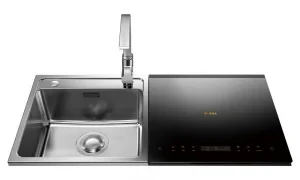
Stainless steel plates have transcended their traditional role in kitchen appliances to become a versatile and indispensable material in various industries, including construction. Their exceptional properties, such as corrosion resistance, durability, and aesthetic appeal, make stainless steel plates a valuable asset in various applications. In this article, we will explore the diverse uses of stainless steel plates, highlighting their importance from the kitchen to construction sites.
The Versatile Nature of Stainless Steel Plates
Stainless steel is a steel alloy known for its resistance to corrosion and staining. This unique combination of properties makes stainless steel plates adaptable to different environments and industries. Here are some of the key attributes that contribute to their versatility:
Corrosion Resistance
Stainless steel plates are inherently corrosion-resistant, ideal for humid, wet, or corrosive settings. This property is particularly valuable in kitchen appliances and construction materials, where exposure to moisture and other corrosive substances is common.
Durability
Stainless steel plates are incredibly durable. They can withstand harsh conditions, heavy loads, and temperature fluctuations, making them suitable for long-term use in various applications.
Aesthetic Appeal
Apart from their functional benefits, stainless steel plates offer an attractive, modern, and clean appearance. This aesthetic quality is highly valued in both kitchen design and architectural applications.
Applications of Stainless Steel Plates
Kitchen Appliances
SS plates have been a staple in the kitchen for decades. They are used to manufacture various appliances, including refrigerators, dishwashers, ovens, and cookware. Their resistance to rust and staining is essential when constant contact with water and acidic substances occurs.
Food Processing Industry
The food processing industry relies on stainless steel plates for various equipment, from food preparation tables and sinks to storage containers. Stainless steel’s hygienic properties, easy maintenance, and corrosion resistance are crucial in maintaining food safety and quality.
Construction Materials
These plates have also found their way into the construction industry. They are used in the fabrication of architectural elements, structural components, and cladding for buildings. The corrosion-resistant nature of stainless steel ensures the longevity of these structures, reducing maintenance and replacement costs.
Transportation
In the transportation sector, SS plates are used to construct vehicles, particularly in the aviation and automotive industries. Their strength, lightweight properties, and corrosion resistance contribute to the safety and efficiency of transportation systems.
Medical Equipment
Stainless steel plates are widely employed in the healthcare sector to produce medical equipment and devices. Their non-reactive, easy-to-clean surface and durability make them suitable for surgical instruments, diagnostic tools, and medical appliances.
Energy Industry
In the energy sector, SS plates are used in power plants and nuclear facilities, where resistance to high temperatures, corrosion, and radiation is critical. These plates play a vital role in maintaining the integrity and safety of energy infrastructure.
Customization for Specific Needs
SS plates can be customized to meet specific requirements, such as thickness, size, and surface finishes. This adaptability allows them to be tailored to the unique demands of different industries and applications.
Conclusion
In conclusion, stainless steel plates have evolved from their humble beginnings in the kitchen to become indispensable components in a wide range of industries. Their remarkable combination of corrosion resistance, durability, and aesthetic appeal ensures they will continue to play a significant role in shaping our modern world.
Stainless steel plates are not just materials; they are solutions that enhance safety, efficiency, and the overall quality of life. Their adaptability and versatility have made them a driving force behind advancements in technology, infrastructure, and even healthcare. As we look to the future, stainless steel plates will likely find even more applications, further cementing their status as a material of choice in diverse industries.





























